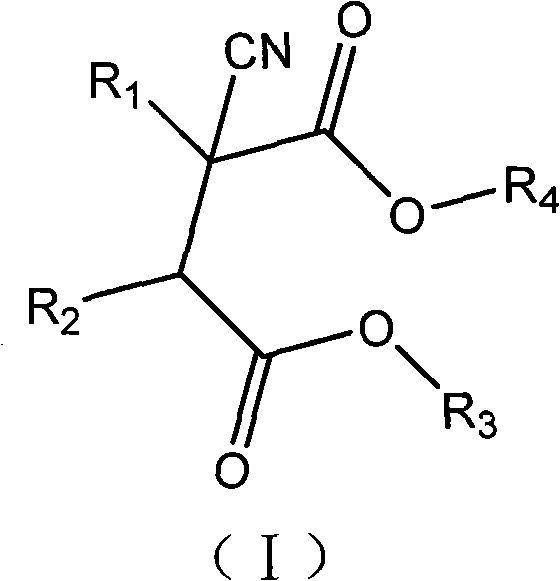Catalyst component and catalyst for olefin polymerization
A technology of olefin polymerization and solid catalyst, which is applied in the field of catalyst components and catalysts, and can solve problems such as narrow relative molecular mass distribution of polymers, poor polymer dimensions, and difficulties in the industrial application of internal electron donor compound synthesis processes, etc.
- Summary
- Abstract
- Description
- Claims
- Application Information
AI Technical Summary
Problems solved by technology
Method used
Image
Examples
Embodiment 1
[0068] (1) Preparation of catalyst solid components
[0069] In the high-purity N 2 In the fully replaced glass bottle, add 5.0 g of anhydrous MgCl successively 2 , 140ml of toluene, 8.0ml of epichlorohydrin, and 10.0ml of tributyl phosphate are completely dissolved at 60°C, and 1.4 grams of phthalic anhydride are added respectively, as described in the patent application specification of China Invention Patent Application No. 200910077779.6 Prepare 5mmol of 2,3-diisopropyl-2-cyanodiethyl succinate, cool the solution to -25°C, then drop 50ml of titanium tetrachloride into it, at -25°C Stir for half an hour, add 3.0 g of silica gel (Davison XPO2485, dry at 600°C for 4 hours before using the silica gel), and then slowly raise the temperature to 90°C to obtain a solid precipitate. After filtering, add 70ml of toluene, wash twice, and separate solid. Then use 60ml of toluene and 40ml of titanium tetrachloride to heat up to 100°C for two hours, filter and wash with toluene and h...
Embodiment 2
[0083] (1) The preparation of the solid component of the catalyst is the same as in Example 1, except that 2.5 mmol of diisobutyl phthalate and 2.5 mmol of diethyl 2,3-diisopropyl-2-cyanosuccinate are added in sequence. mmol, instead of diethyl 2,3-diisopropyl-2-cyanosuccinate (5 mmol) added alone.
[0084] (2) The propylene polymerization method is the same as in Example 1, and the test results are shown in Table 1.
[0085] Table 1 Catalyst performance
[0086]
[0087] It can be seen from the data in the table that the performance of the catalyst is excellent, not only the activity for propylene polymerization is equivalent to that of the existing catalyst containing internal electron donors of diisobutyl phthalate, but also the polymer has good isotacticity and high weight-average molecular weight , a wider molecular weight distribution.
PUM
| Property | Measurement | Unit |
|---|---|---|
| particle size | aaaaa | aaaaa |
| particle size | aaaaa | aaaaa |
Abstract
Description
Claims
Application Information
 Login to View More
Login to View More - R&D
- Intellectual Property
- Life Sciences
- Materials
- Tech Scout
- Unparalleled Data Quality
- Higher Quality Content
- 60% Fewer Hallucinations
Browse by: Latest US Patents, China's latest patents, Technical Efficacy Thesaurus, Application Domain, Technology Topic, Popular Technical Reports.
© 2025 PatSnap. All rights reserved.Legal|Privacy policy|Modern Slavery Act Transparency Statement|Sitemap|About US| Contact US: help@patsnap.com



